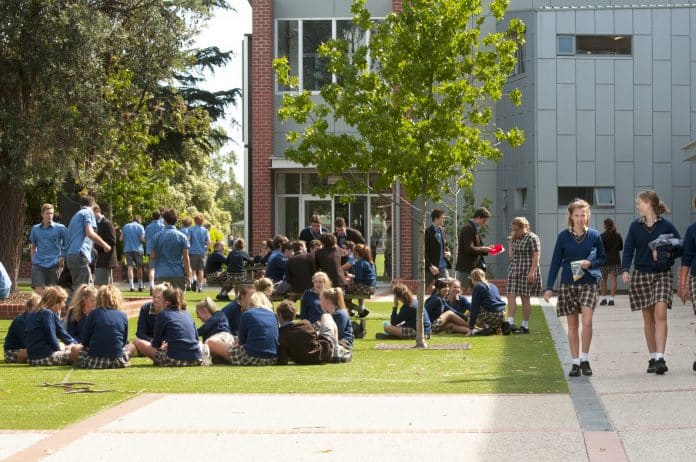
The new year has begun. The roads that have been quiet will fill again. Christmas and the holidays will be forgotten in the routine that becomes work; that in the lives of students, becomes school.
The new school year can bring excitement. It can also be an anxious time for some students. The summer break brings changes – six weeks of growth brings a slightly different face for every child, a series of experiences, a change in the pattern of the everyday.
For some students, the break will have brought an opportunity to spend more time with parents and siblings, perhaps going to another place for a holiday experience elsewhere. For others, a chance to read, play games, spend time with friends, watch a sport on television or their favourite TV shows. Maybe even spend more time using electronic devices.
Time brings us experiences, some desired and some not. Some students may have experienced loss over the holiday. Others may have been sick or felt isolated or alone.
All students, regardless of their experiences, return to school different to how they left, even if the differences are subtle.
The new academic school year brings an opportunity for a new start for each student. This means that parents, educators and students have an opportunity to do something that can shape the year ahead. Raising expectations is something that should be considered. For a student, raising expectations is extremely important to shaping growth.
Schools, like families and communities, are social settings where students tend to take on ascribed or prescribed roles. In each school, there are identifiable archetypes in terms of students. Some of these are: the teacher pleaser, the naughty boy, the talkative girl, the distractible boy, the underachieving younger sibling, the sporting ‘jock’, the ‘girly girl’.

These predictable classifications or labels serve to fix students to particular roles and affect the expectations of educators and parents alike. Expectations are interesting phenomena with respect to students. Expectations act as self-fulfilling prophecies. That is, what is expected of students will likely be the outcome. Studies internationally have shown that teacher expectations (and parent expectations) directly affect the performance and achievement of students. If students are expected to struggle with concepts, content or exams – then they struggle. However, the corollary is also true. Where high expectations are a feature, growth can be seen.
It is incumbent on teachers, and parents, to expect more of students. However, high expectations alone are not enough, as high expectations, without appropriate support, kindness, respect and understanding, can lead to oppressive behaviour from adults which, in turn, can lead to a sense of failure or unworthiness in students. This will hamper students’ ability to learn or take academic risks.
So, what does a high expectations environment look like?
Such an environment occurs when educators and parents set high expectations of themselves first.
From a parent’s perspective this means expecting an appropriate standard of behaviour from children. The standard in this regard means respectful, courteous and dutiful. However, it also means that there is a reciprocal requirement of parents – to be respectful, courteous, protective, understanding and nurturing. When expectations are devoid of nurturing, understanding and kindness, then the standards can become an overbearing weight. The pressure to achieve, to do or be something, can detract from what a child needs to know, or the issues they might face in boosting their own personal standards. One such issue may be low self-confidence, or a lack of self-belief.
From an educator’s perspective, high expectations start with standards related to teaching and learning. Educators want their students to do well. Usually, in academic terms, this takes the form of increases in marks and grades. It also can include social, behavioural, psychological and motor skill changes. However, wanting students to improve, of itself, will not achieve improvement. Educators need to be active and targeted in how they assist students to manifest high expectations. Teachers have high expectations of their own teaching will help orientate the teaching and leaning and will role model continuous improvement.
Of course, in this regard, there is a reciprocal duty for educators. Students should expect and receive well-prepared lessons that do not over rely on a particular text. They should use of a variety of ways of presenting information and ideas (visual, auditory and kinaesthetic are a basic minimum), and role model each of: a deep and growing subject matter expertise, a capacity to understand and manage a fear of failure, respect for students, flexibility in thinking and kindness and empathy. Without these, high expectations can become a rod, motivation can become centred on external standards rather than intrinsic motivators, and the focus shifts to a dichotomous ‘reward and punishment’ model.
It is a new year and educators and parents can begin by questioning stereotypes that limit, raise expectations and assist students to become what they can be.






